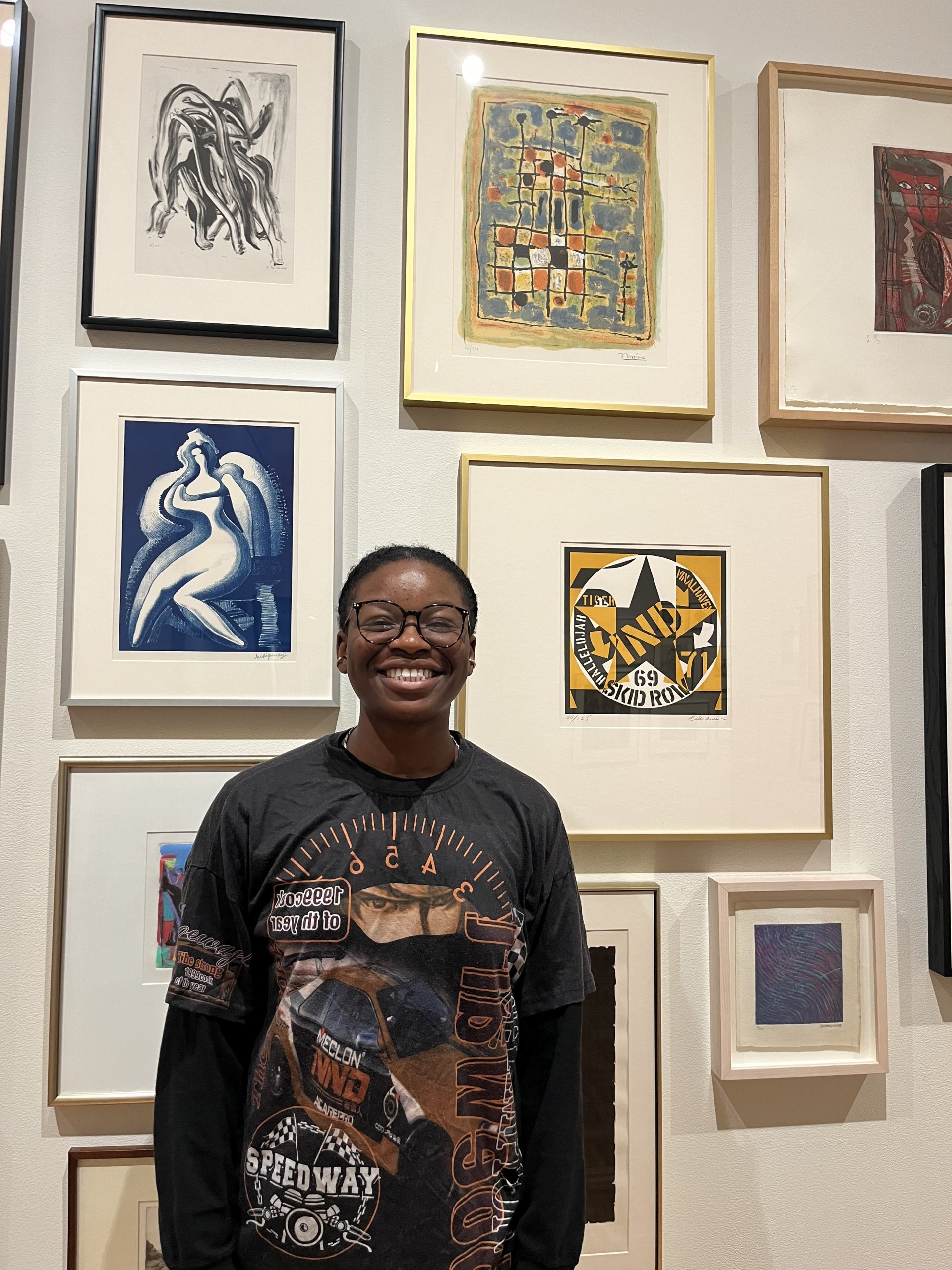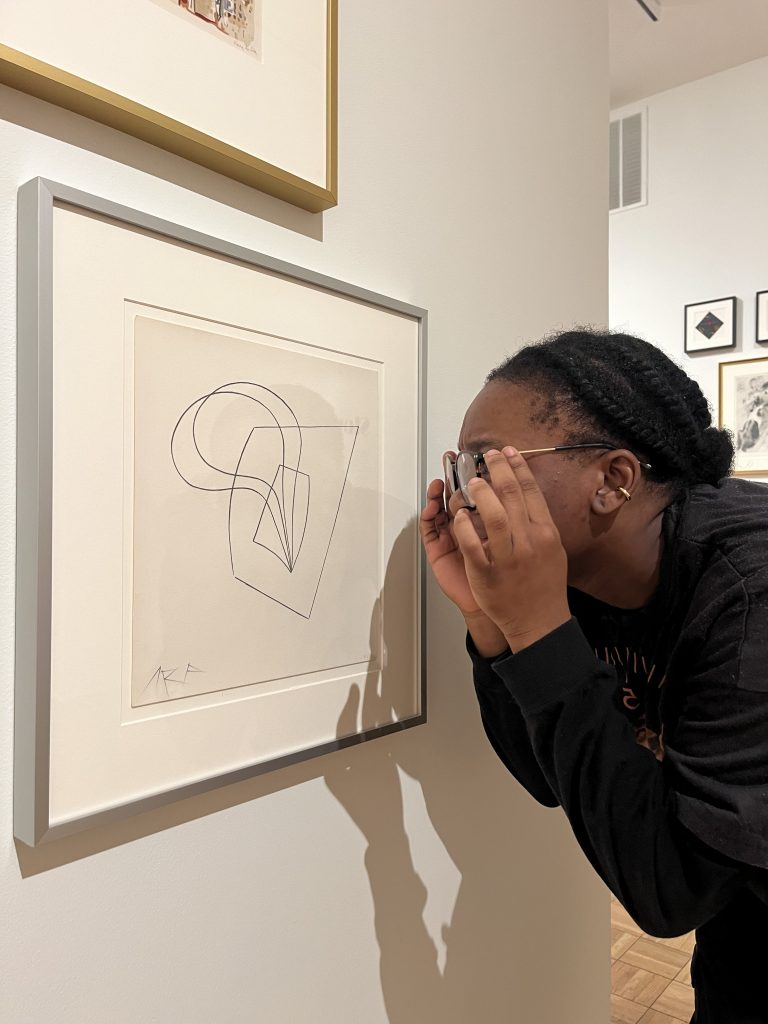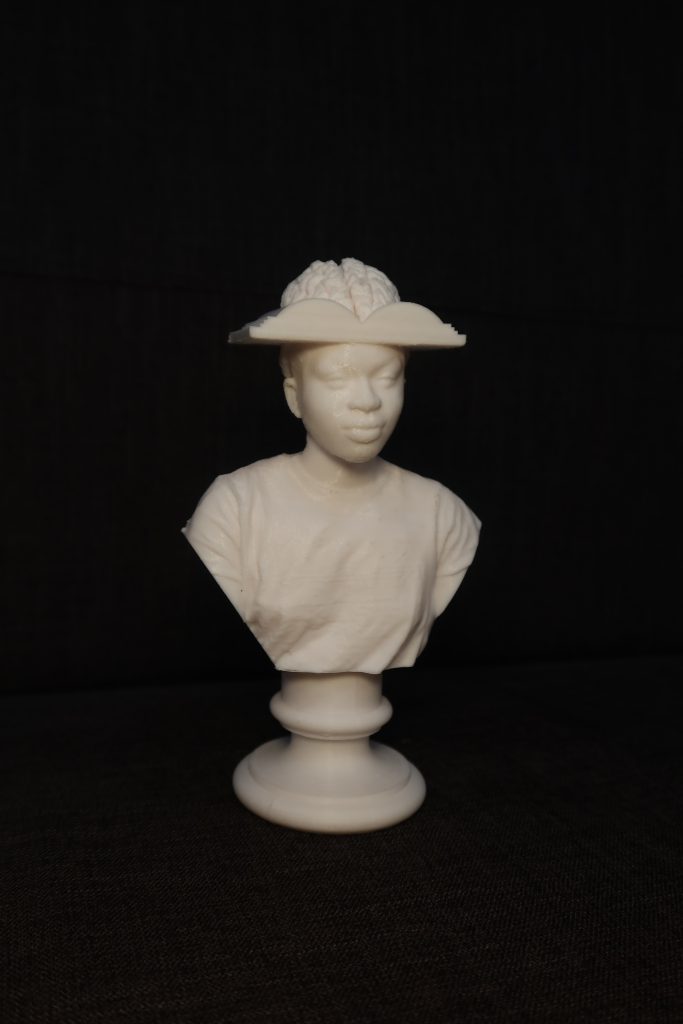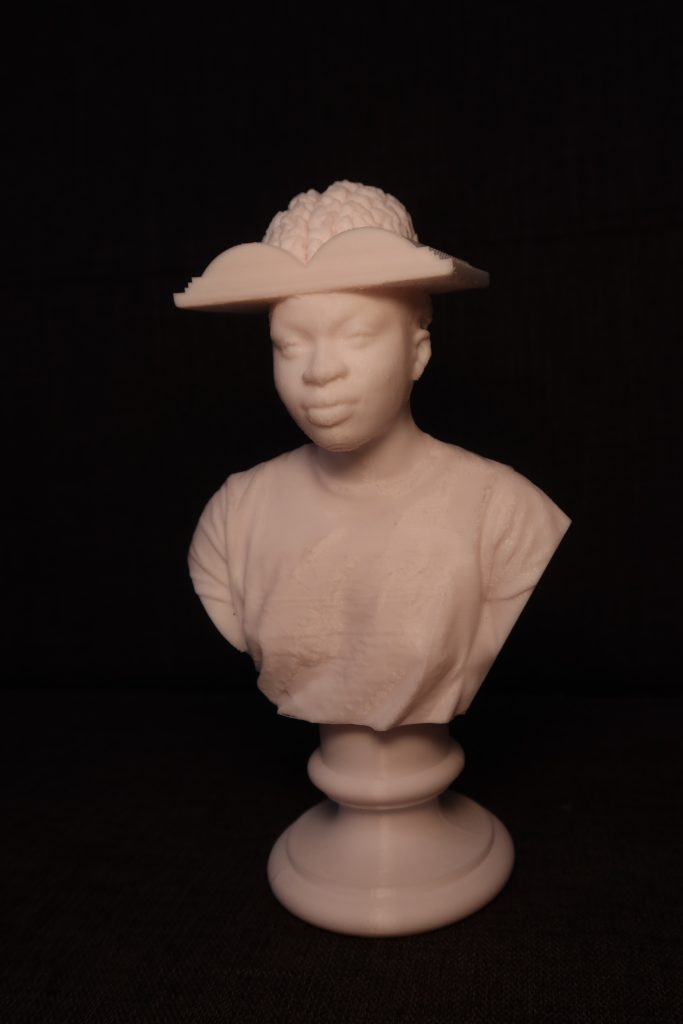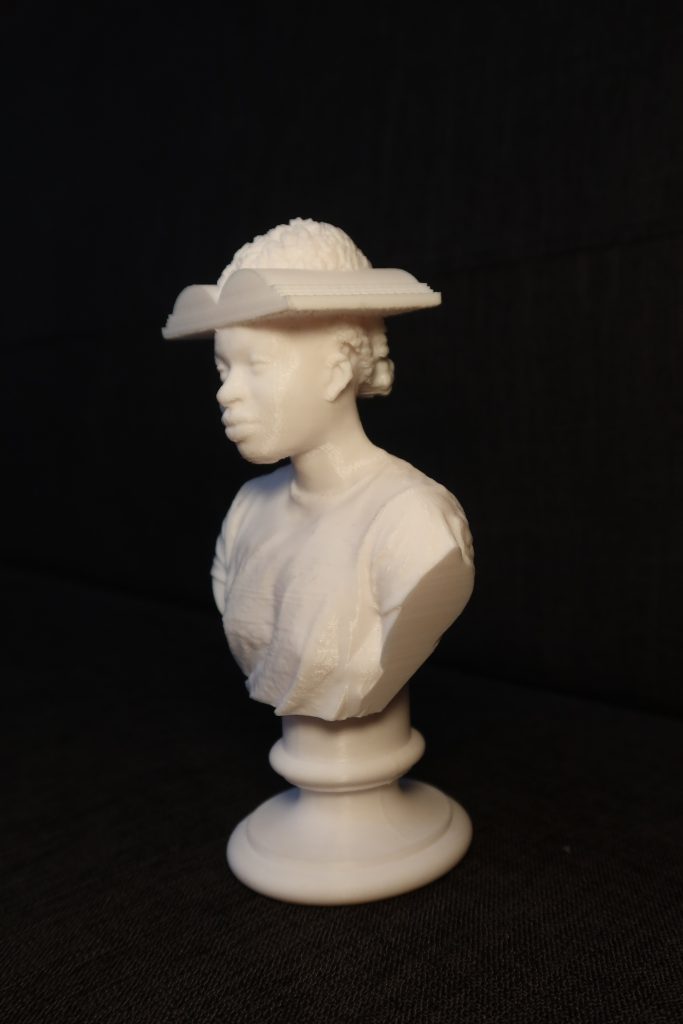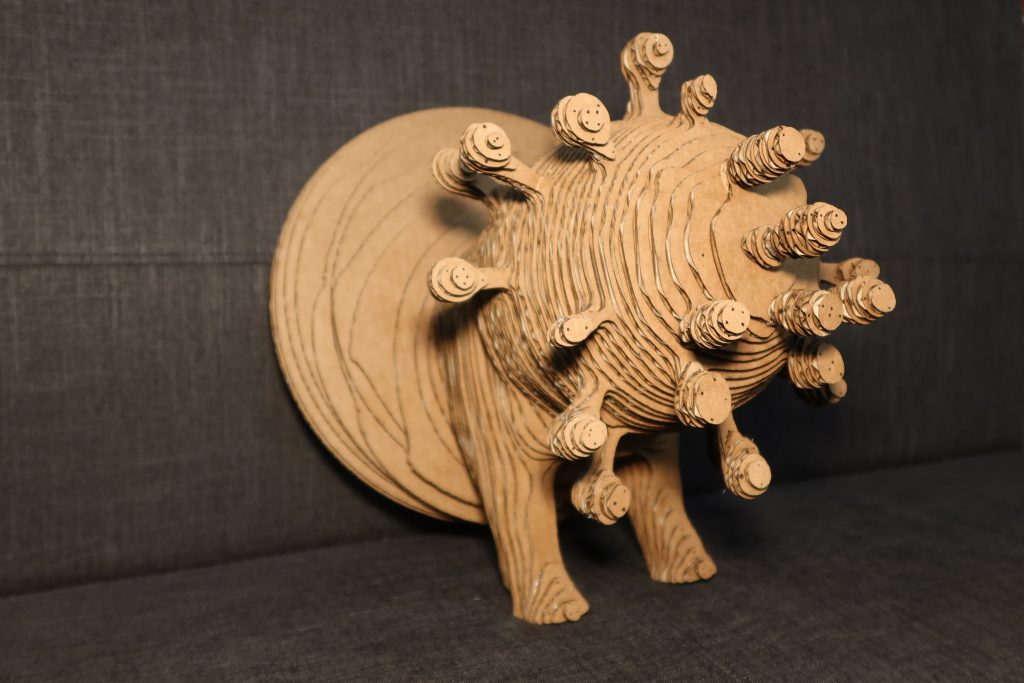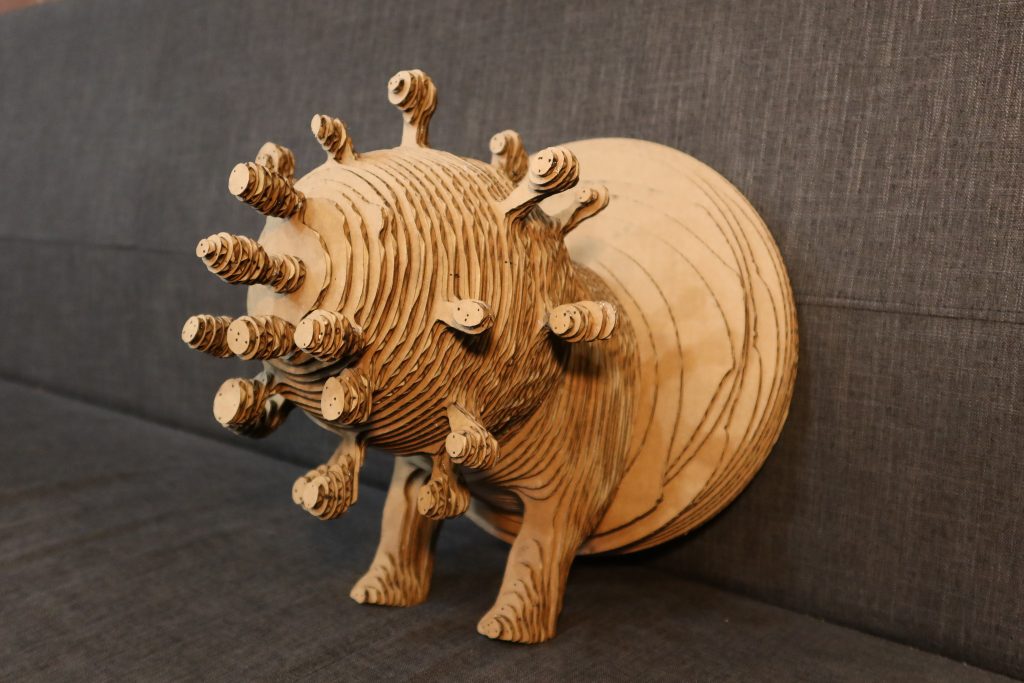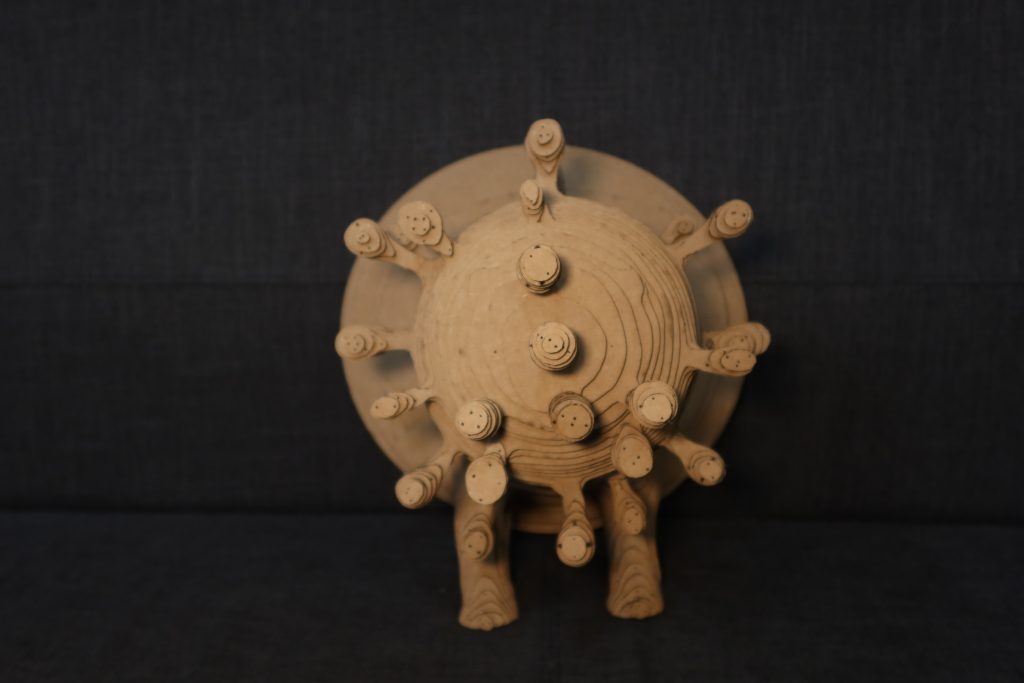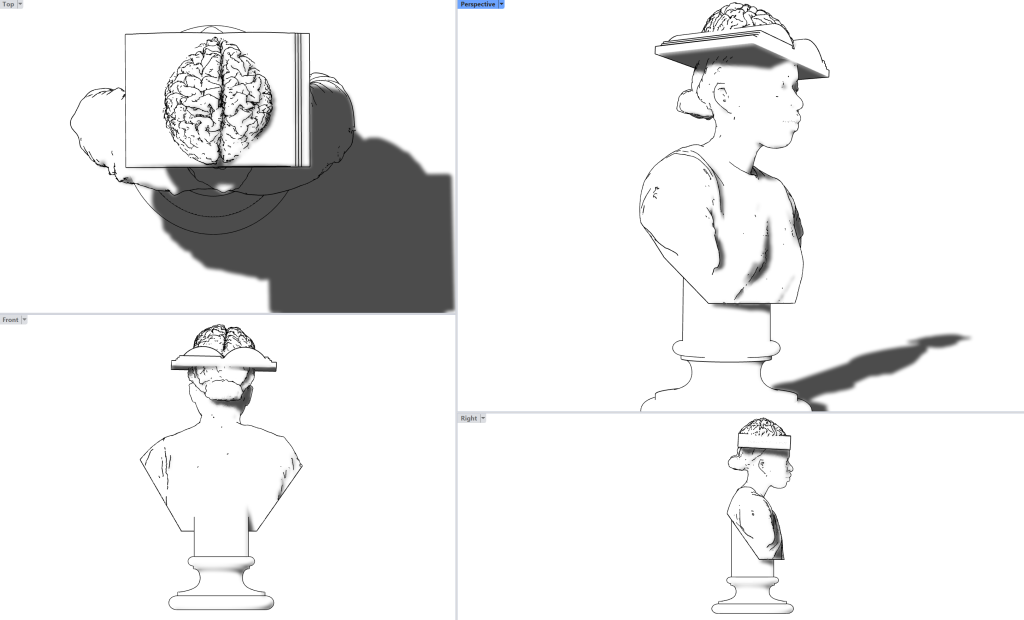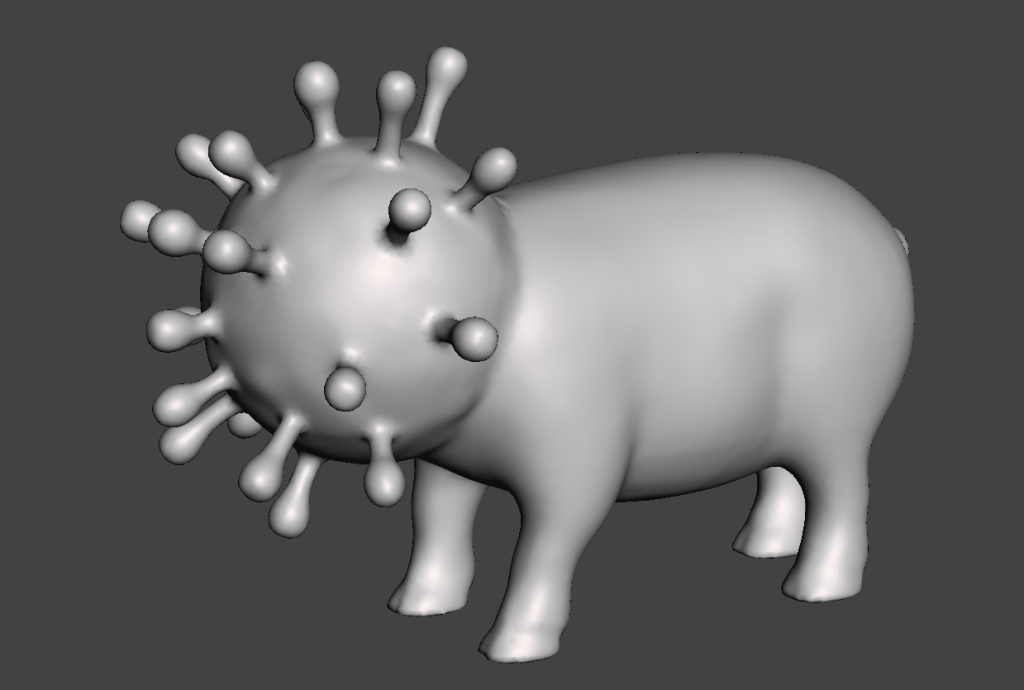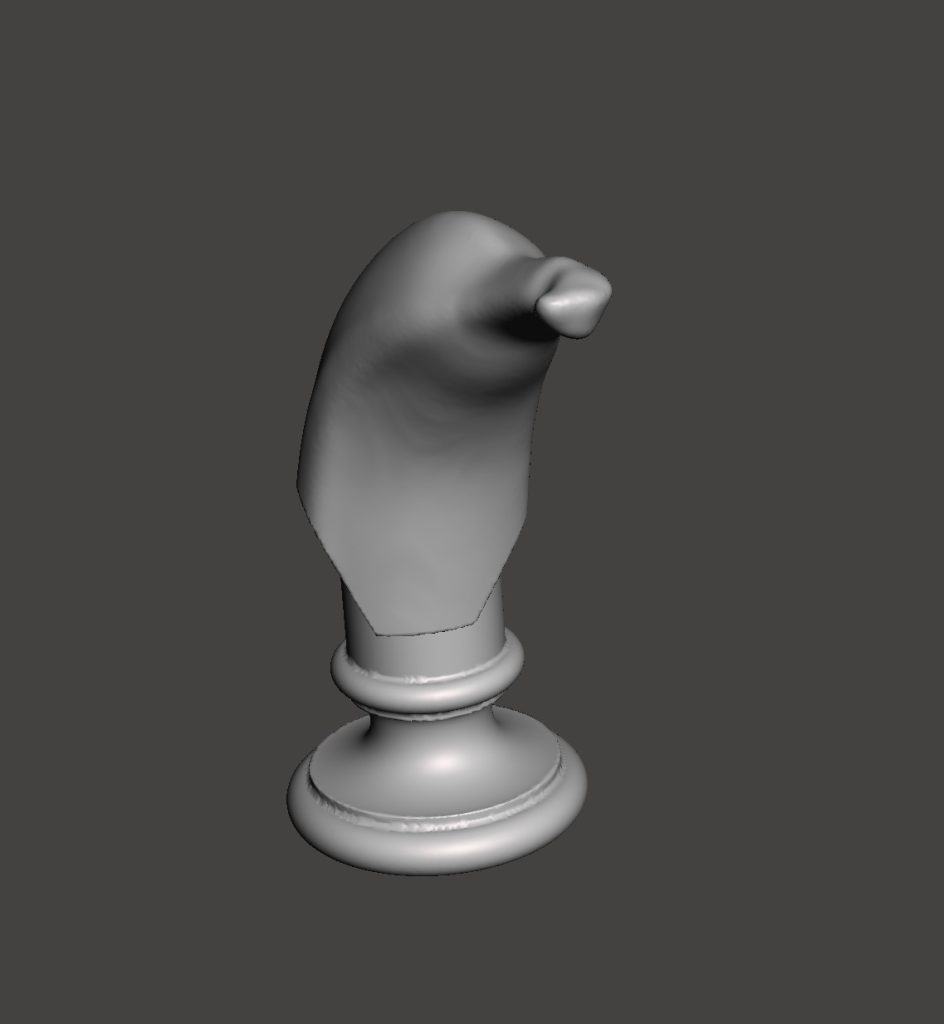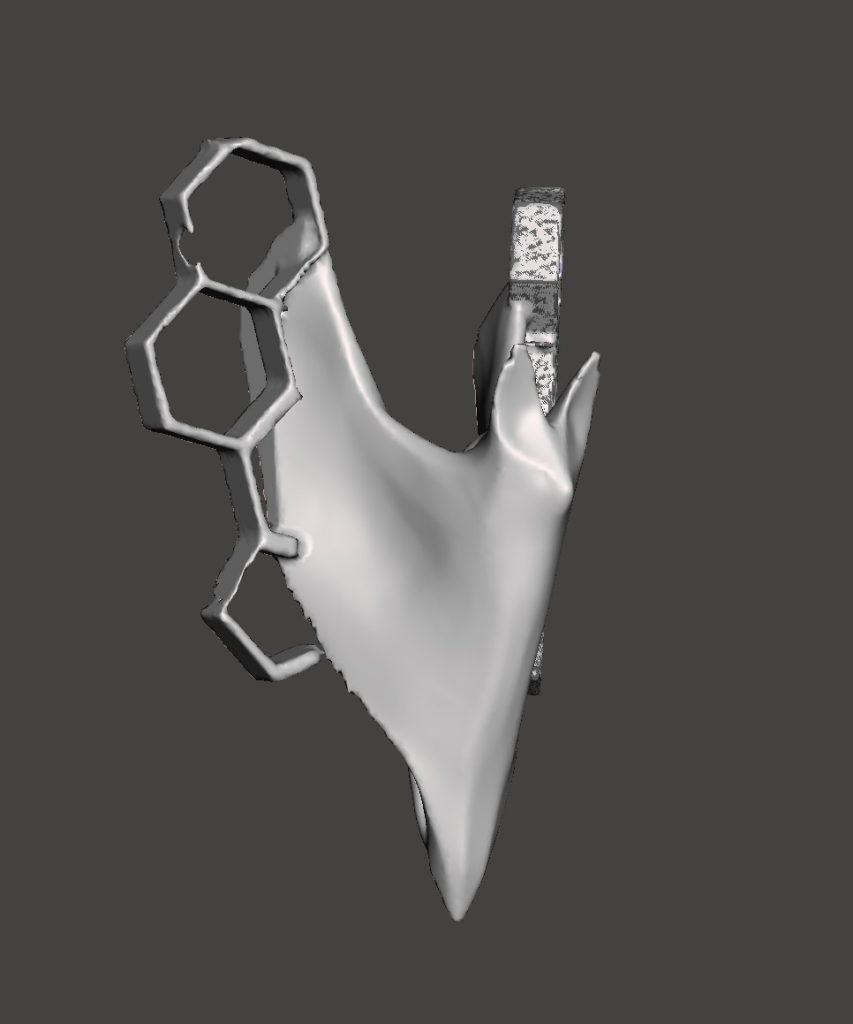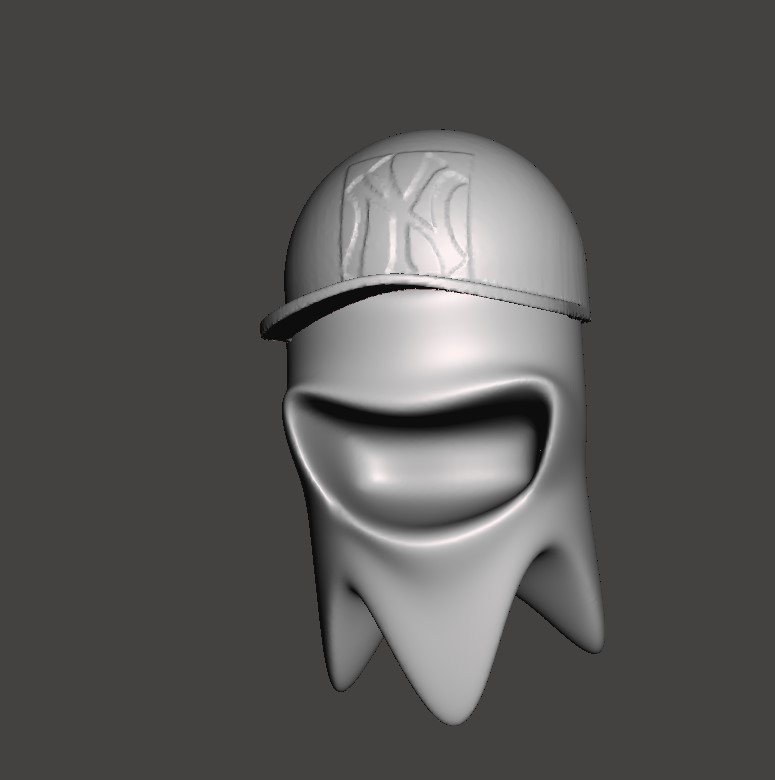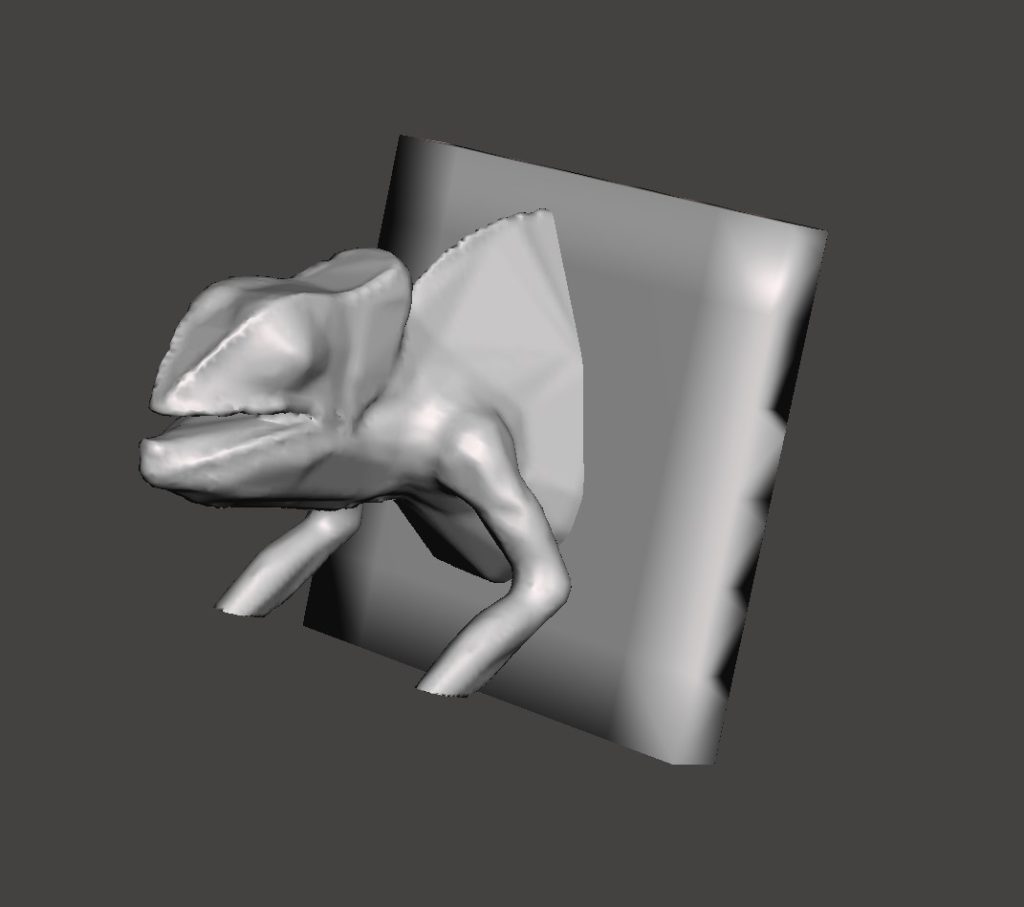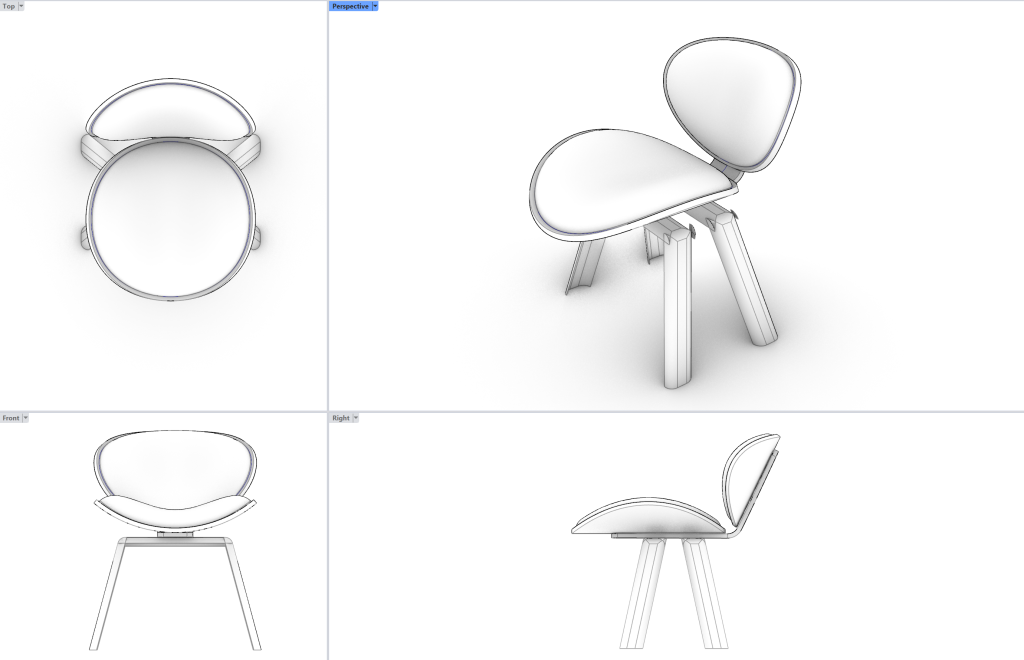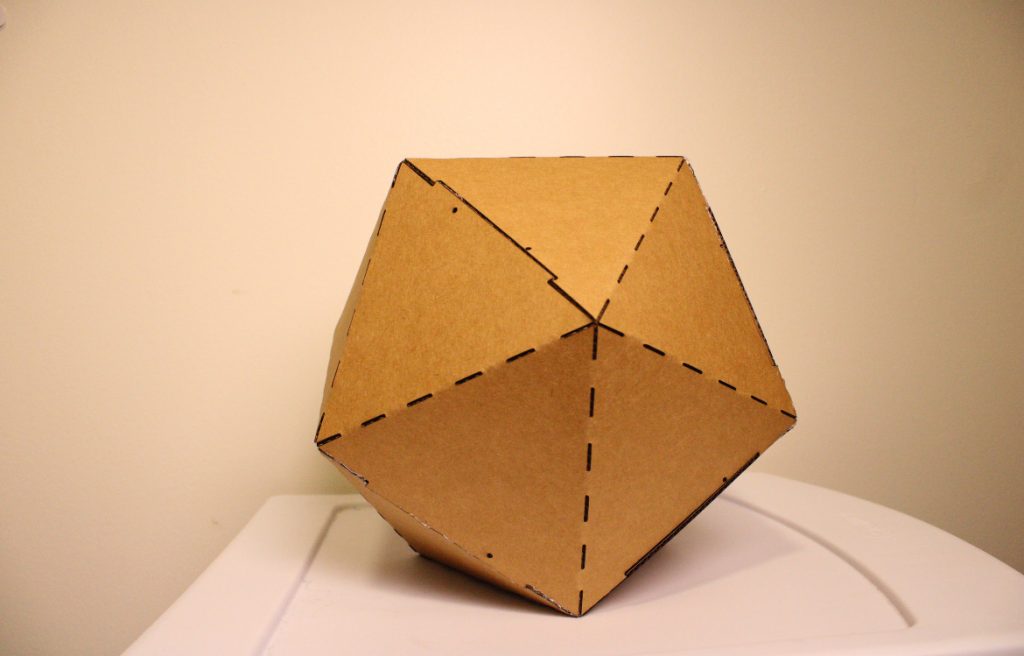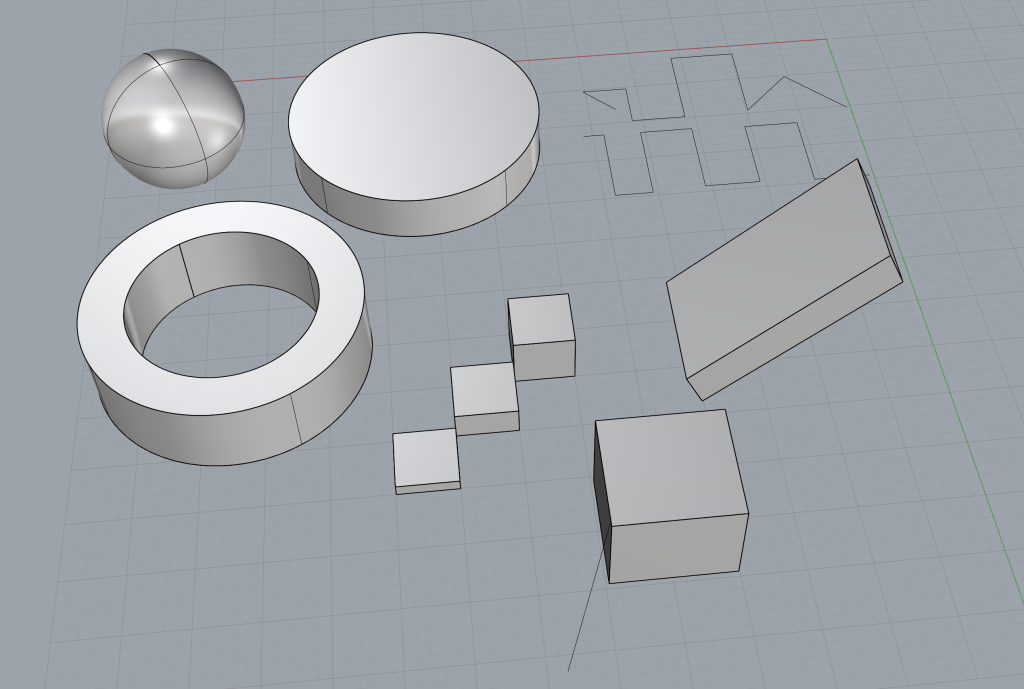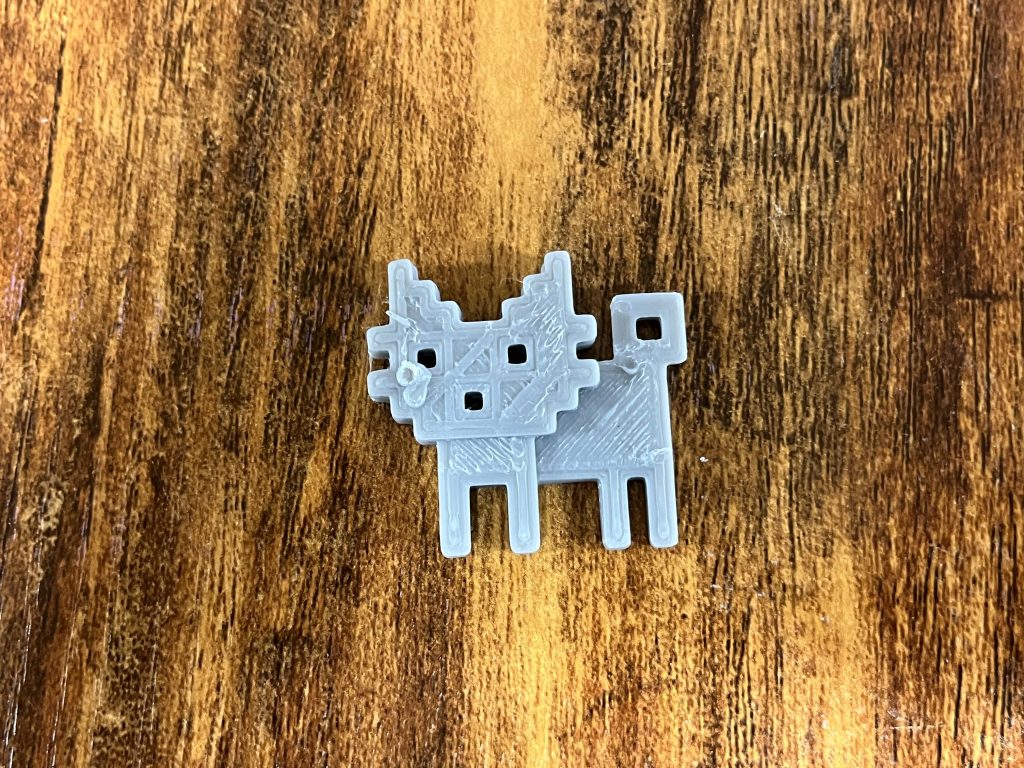Title of Event: Samek Kress Collection
Date & Time of Event: December 5th, 2024 (15:00)
Location of Event: Elaine Langone Center, Samek Art Gallery, Third Floor
Type of event: Permanent exhibition
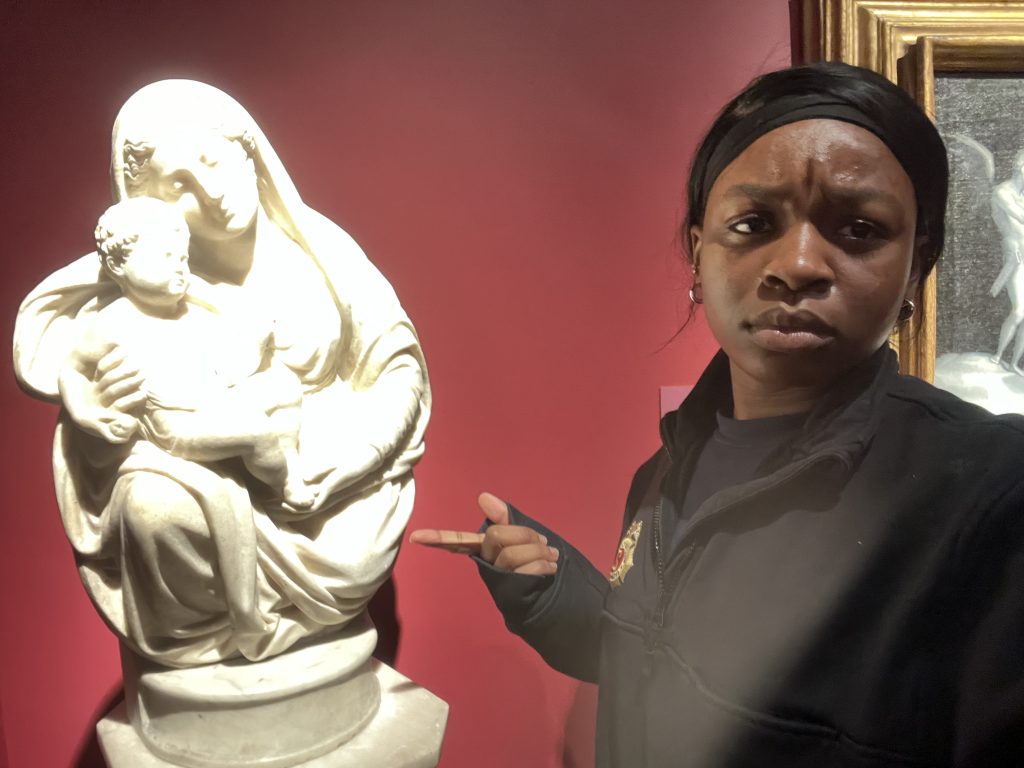
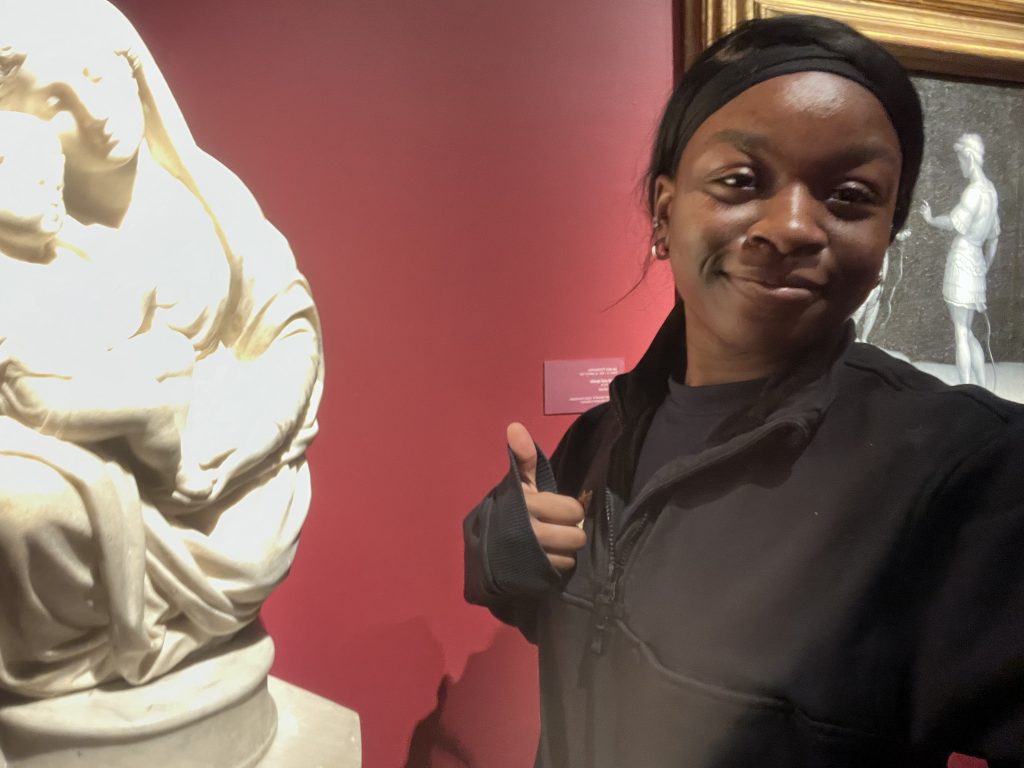
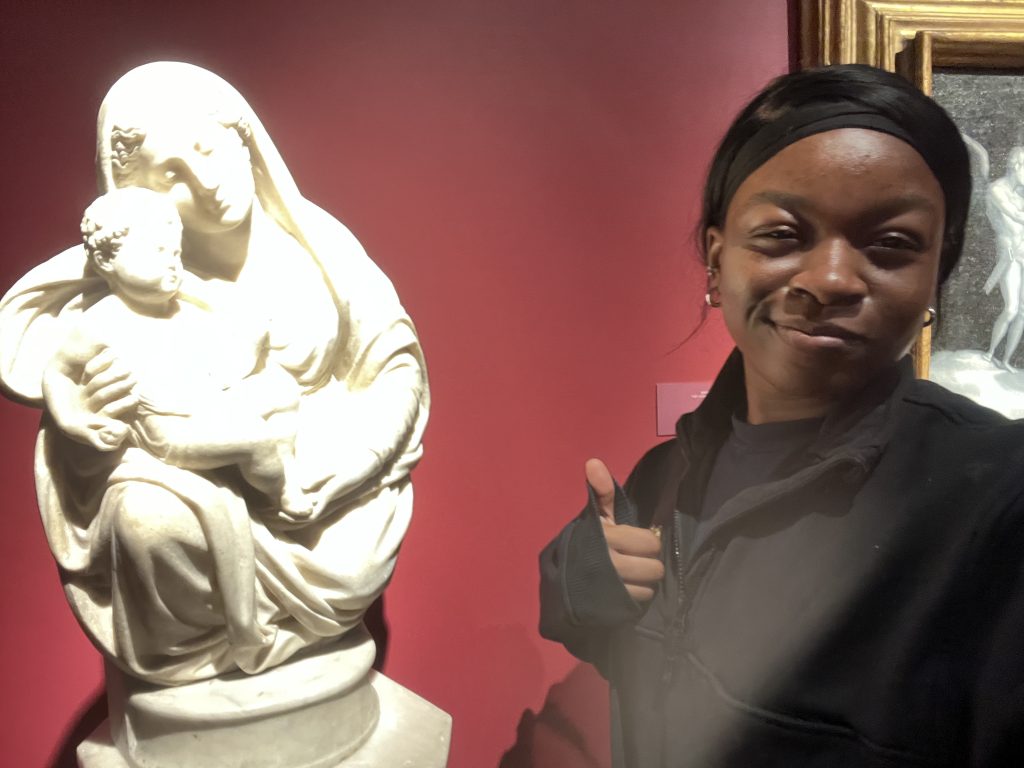
Title of Event: Samek Kress Collection
Date & Time of Event: December 5th, 2024 (15:00)
Location of Event: Elaine Langone Center, Samek Art Gallery, Third Floor
Type of event: Permanent exhibition



Title of Event: Driftpoints: The Gleaners
Date & Time of Event: 05 December, 2024 (15:00)
Location of Event: Holmes Hall 103
Type of event: Ekard exhibition

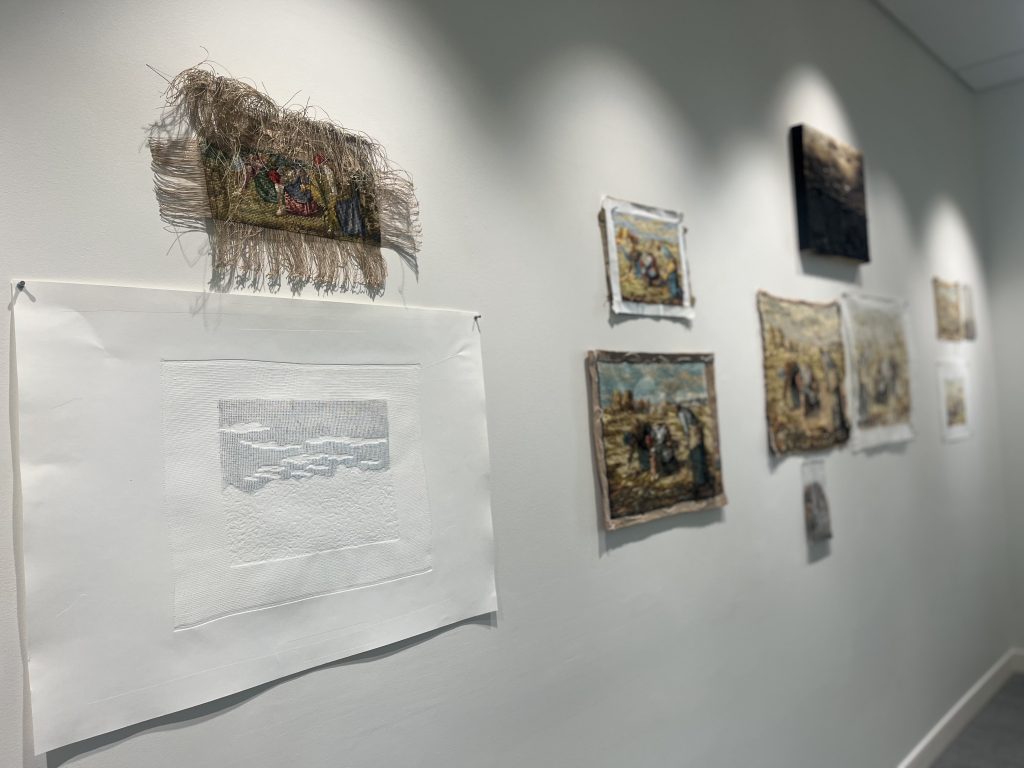
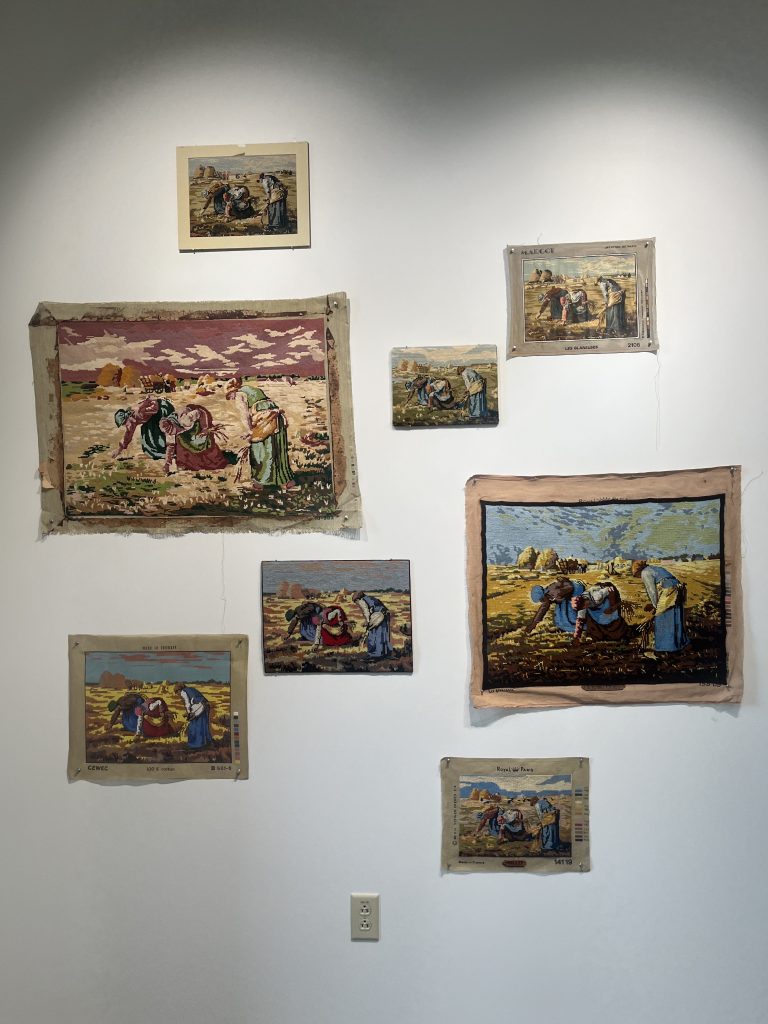
Artist: Olu Amoda
Work Title: Street Vendor – Monsura Agbo I, 2019
Attribute: In Amoda’s work, he uses symbols of real people to create a mix of storytelling, repurposing scraps of metal to convey these stories. To some, this sculpture may simply seem like an expression of Amoda’s fascination with a street seller desperate to make sales. However, to me, this work represents much more. It symbolizes sacrifice and resilience in the midst of a discouraging atmosphere. In the Nigerian economy, resources such as water and food are becoming increasingly scarce, and the seller’s desperation to make sales in this environment symbolizes resilience. This is a motivating factor I would like to explore in my own work.
I want to incorporate my understanding of the angle at which the head is positioned into my own piece. The downward-facing head reflects the discouragement caused by the circumstances, yet the balance of the items on the head continues to convey the notion of resilience. This is a theme I wish to carry through in my own project.
1. List out five dangers you’d like to protect yourself from. (These could be environmental dangers, your own impulses, “frienemies”, aggressive dogs, nuclear war, worrisome thoughts, etc.)
2. List out five ways you’d like to extend the capabilities of your body. (e.g., be stronger, be taller, be more flexible, be able to breathe underwater, be able to go without food, able to think more clearly, more comfortable around strangers, etc.)
3. Choose one of the ten items you listed above—this will be the purpose of your wearable art project.
4. Tell why you chose to design a work of art that will protect/extend the body in this way.
I chose this purpose because during the Thanksgiving break, I found myself in situations where I didn’t have enough time to rest, and the thing I prayed for the most was the spirit of discernment—to make the correct decisions for myself and those involved in what I was going through. Having the ability to make clear and unquestionable decisions is a gift I strive to maintain.
5. Give some more information on the purpose of your project. Explain its function in depth.
The spirit of discernment is something I have made a major prayer point in my life, as I feel like I’ve been making bad decisions recently. I often reflect on Proverbs 3:5, which says, “Trust in the LORD with all your heart and do not rely on your own understanding.” This verse reminds me to trust in divine guidance, rather than relying on my own limited perspective. The purpose of my wearable art is to serve as a reminder and a tool for grounding myself in wisdom and clarity, helping me to make decisions with confidence. It will act as both a protective shield against impulsive decisions and a physical symbol of my spiritual practice of discernment.
6. List out 10 tangible people/places/things that are associated with the purpose of your project.
`Church
Home
Family
Friends
Research Institute
Woods
Laptop
Cooking
Walking
Working as an EMT has exposed me to profound and often traumatic moments—resuscitating a patient in front of their grieving family, clearing the airway of someone who had already slipped into rigor mortis, or administering CPR to elderly individuals during their final moments on Earth. These experiences, while difficult, have taught me to seek the good in every situation, a perspective rooted in the prayer my mother often recited: “God, we thank you for the lives of those who have passed.” For years, I didn’t fully understand this sentiment, but over time, I came to find meaning in it.
Last summer, I made a conscious effort to focus on gratitude, even amidst trials. Instead of dwelling on hardship, I sought to embrace joy intentionally, expressing it even when I “wasn’t feeling it.” This mindset grew through time spent in nature, where I felt an undeniable connection to God. The simplicity of walking among trees, observing the intricacies of creation, and meditating on life’s cycles brought me peace and perspective. I began to see nature as a reflection of myself—growing from pain, rooted in faith, and sustained by God’s grace.
This connection to nature inspired a piece of art I created: a head connected to an arm holding up a mushroom that grows from the hand. It reflects my journey of growth and gratitude. The mushroom symbolizes transformation and regeneration, thriving on decay yet bringing life. It reminds me of the lessons I’ve learned: that even in the face of trauma and death, there is room for healing, reflection, and gratitude.
One vivid experience stands out to me. On a call responding to a motor vehicle accident, the patient had been ejected from his vehicle. When I arrived, it was clear his body could no longer sustain life. His lips were blue, his eyes vacant, and his form was unrecognizable. As the physician pronounced him dead, I feared how this moment might affect me. But instead of succumbing to fear or grief, I prayed on the scene and found gratitude—for the privilege of comforting his family, for the courage of my team, and for the reminder that life, though fragile, is precious. This moment solidified my resolve to embrace every trial as an opportunity for growth.
Just as a mushroom thrives in challenging conditions, I have grown from the trials I’ve faced. The reflection I see in my art and in nature reminds me to remain rooted in faith and to continue expressing gratitude, even in the most difficult moments. Life’s challenges may seem insurmountable at times, but through God’s grace, I have learned to smile through the pain and grow stronger with each passing day
.Sketch brainstorm
Heart with cage around it (vein like)…fruits of the spirit symbolically are cross linked in the cage
Eating/stomping “fear”
Smiley skull (death)
Blank face with grim smile, holding mushroom smiling back in soil had
Tree of life; symbols of joy at top, rooted in fear
Face looking up at beams of light
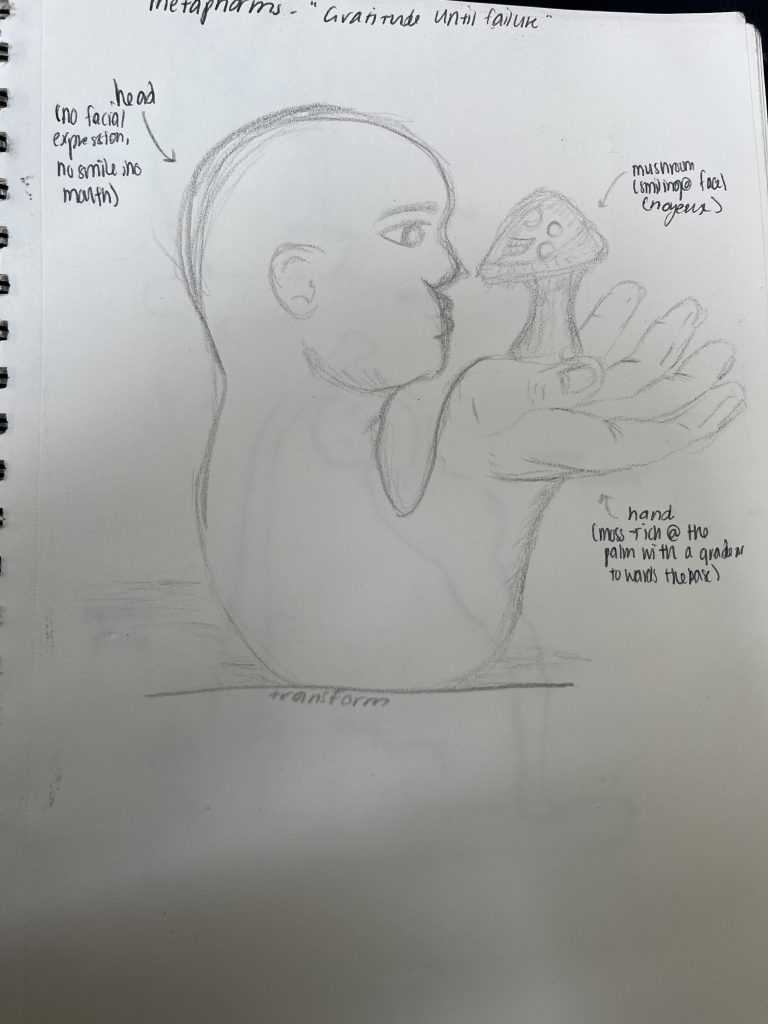
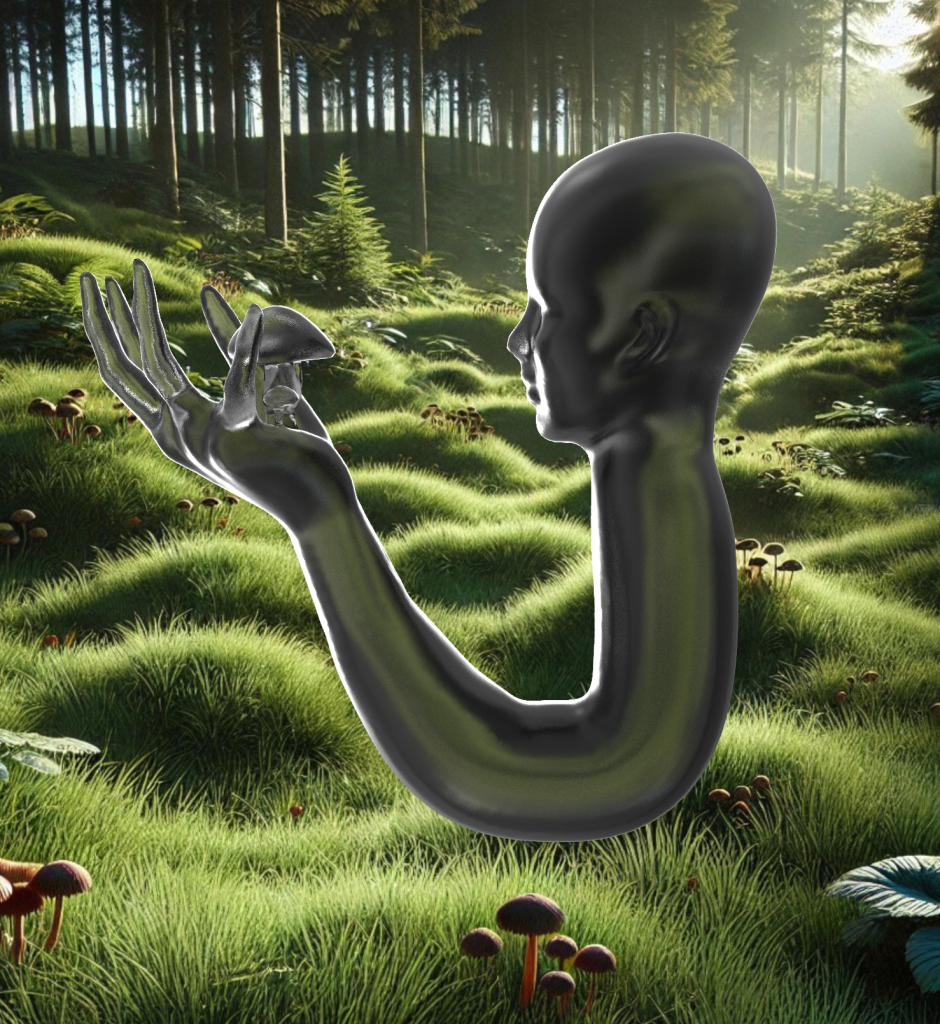
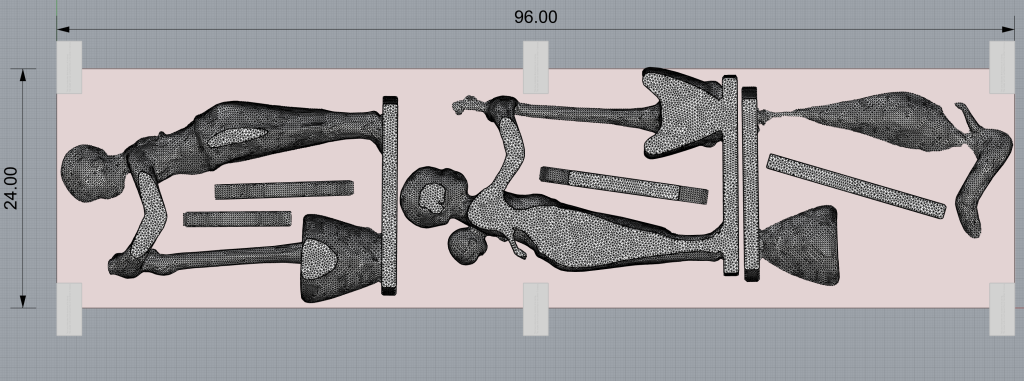
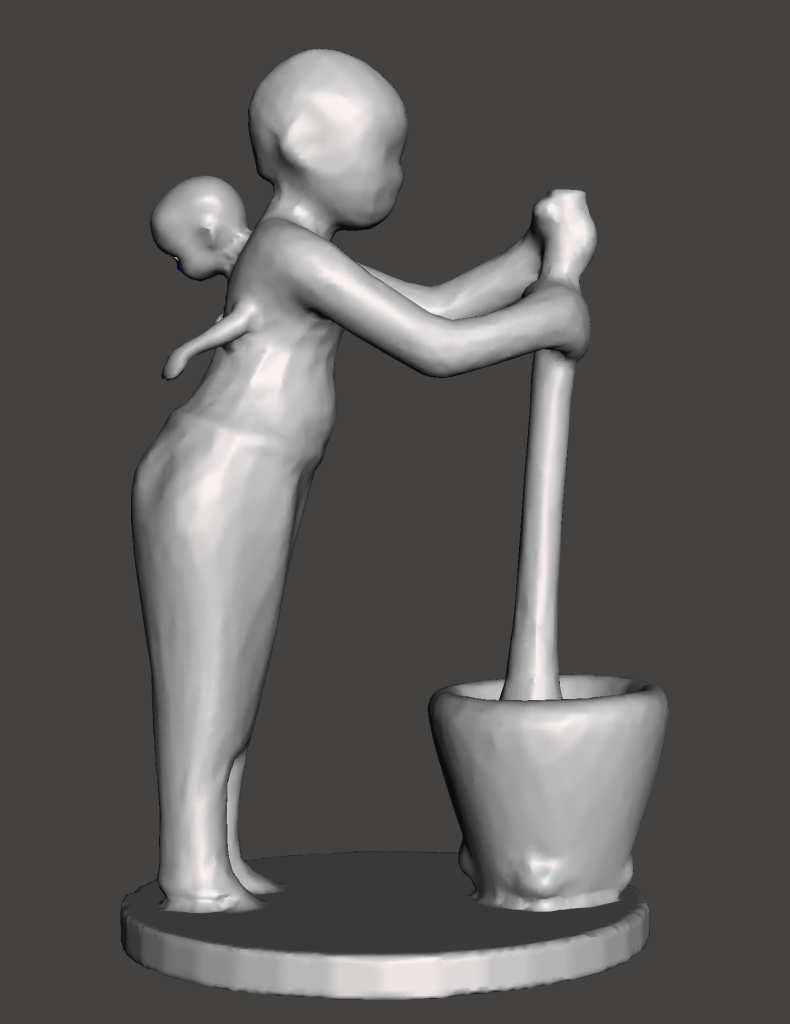
Thorn Carving – Pounding Grain
This sculpture depicts a Nigerian woman using a mortar and pestle to pound food, likely grain, for consumption. The image is a representation of an everyday activity that holds deep cultural meaning, as it highlights the woman’s role in food preparation.
The sculpture symbolizes the value of sacrifice in Nigerian culture, particularly the role of women in supporting their families. The woman’s act of pounding grain is not just about preparing food—it represents her dedication and the sacrifices made to ensure the well-being of her household.
The mortar and pestle evoke personal memories of my childhood, reminding me of my mother’s connection to her homeland. When she received a mortar and pestle from our village, it helped her feel grounded. Watching her prepare meals and later learning to use the tool myself created a lasting sense of cultural continuity.
I want the distorted version to emphasize the nostalgia of learning these traditions from my mother and reflect the communal values embedded in this act. It will tie to the themes of sacrifice, cultural preservation, and community.
I plan to add images or symbols of children to represent the passing down of cultural practices. This distortion will explore how these traditions are preserved across generations, emphasizing the cultural continuity I hope to maintain for my future children.
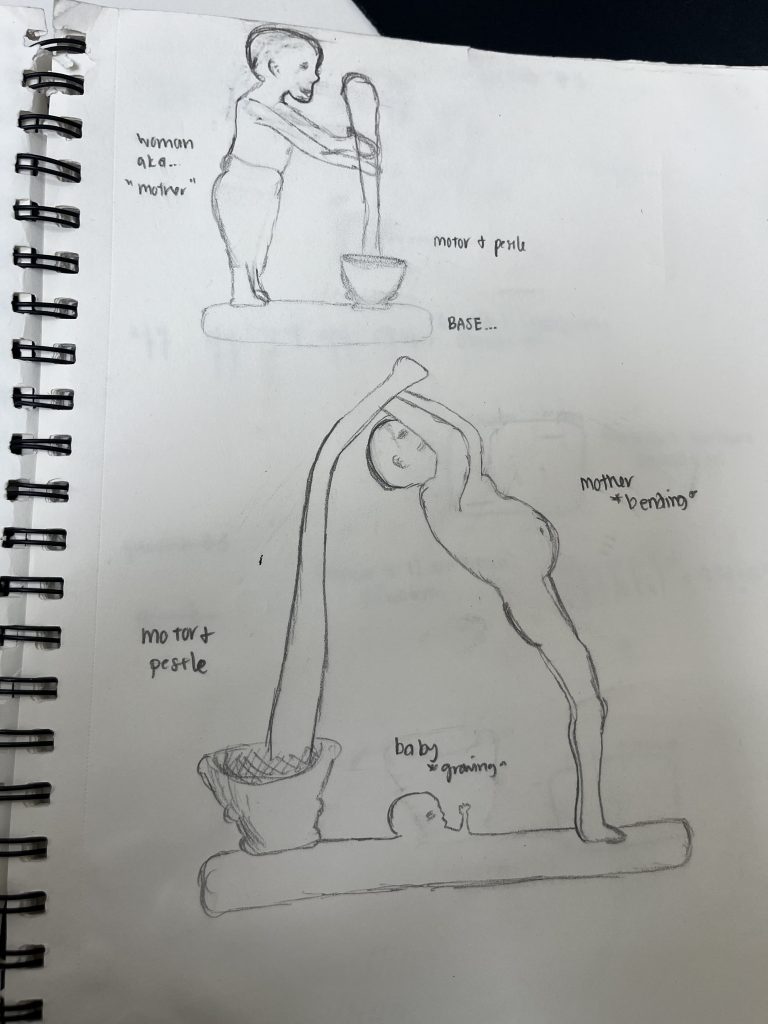
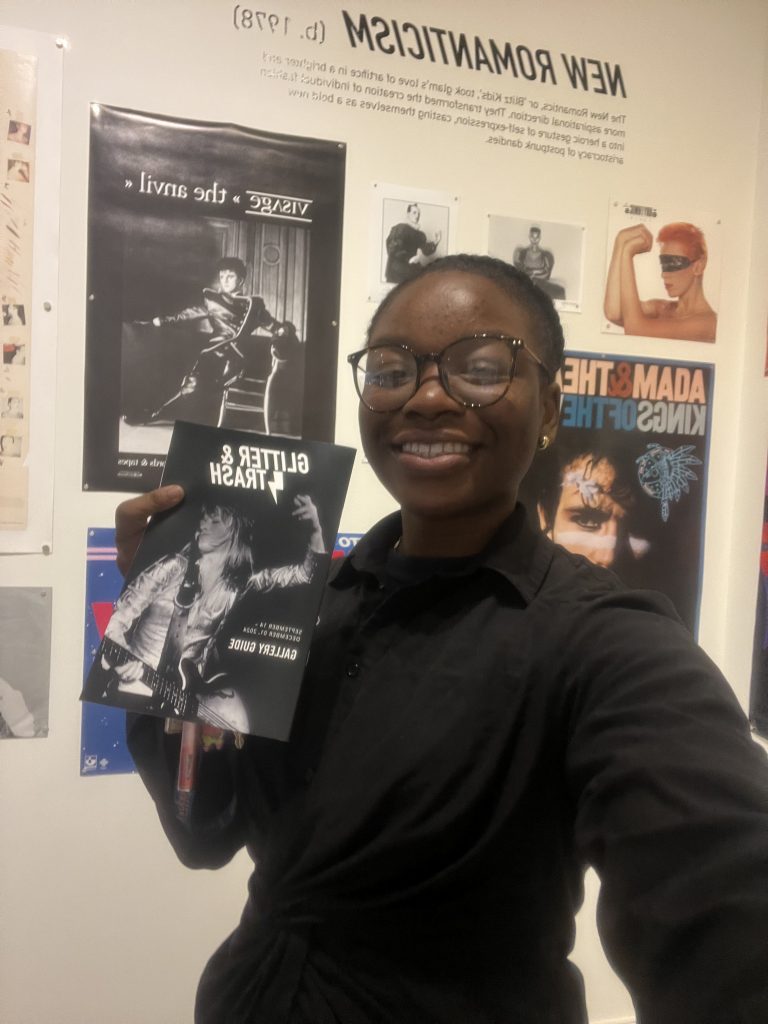
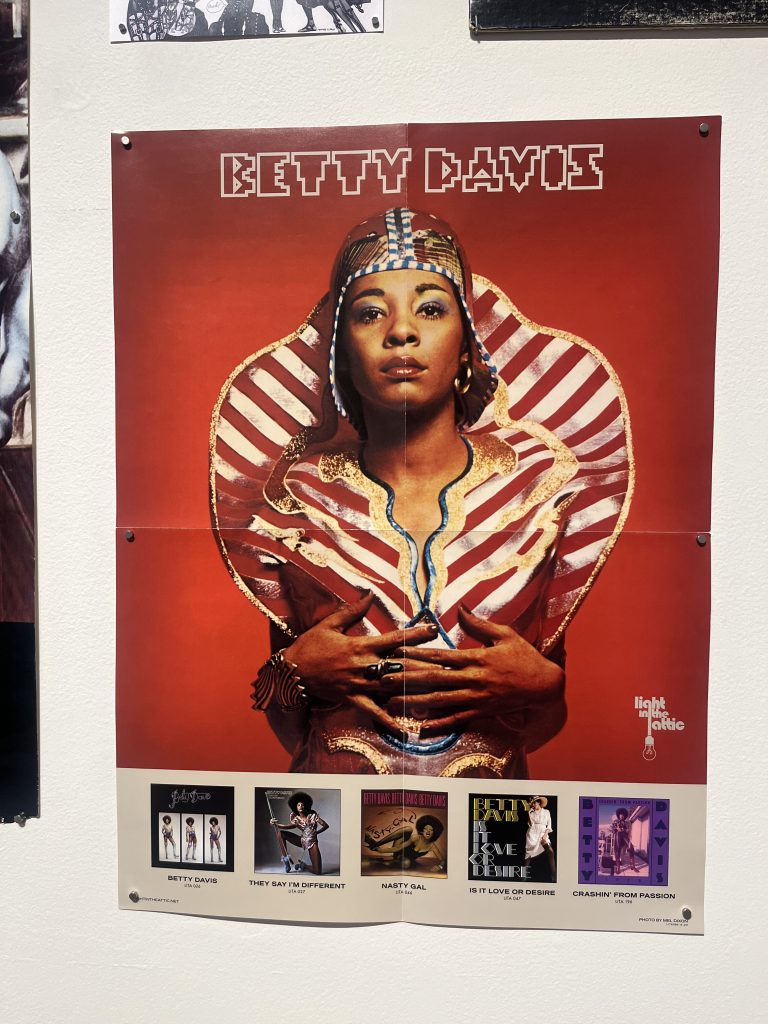

Title of Event: Glitter and Trash
Date & Time of Event: Thursday October 10th, 4 pm
Location of Event: Downtown Samek Art Gallery
Type of event: Current Exhibit
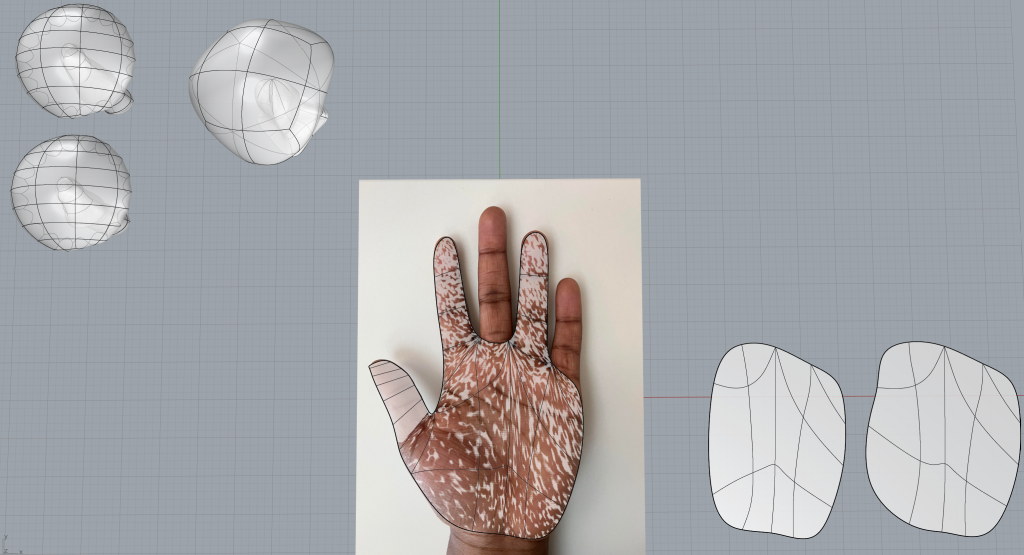
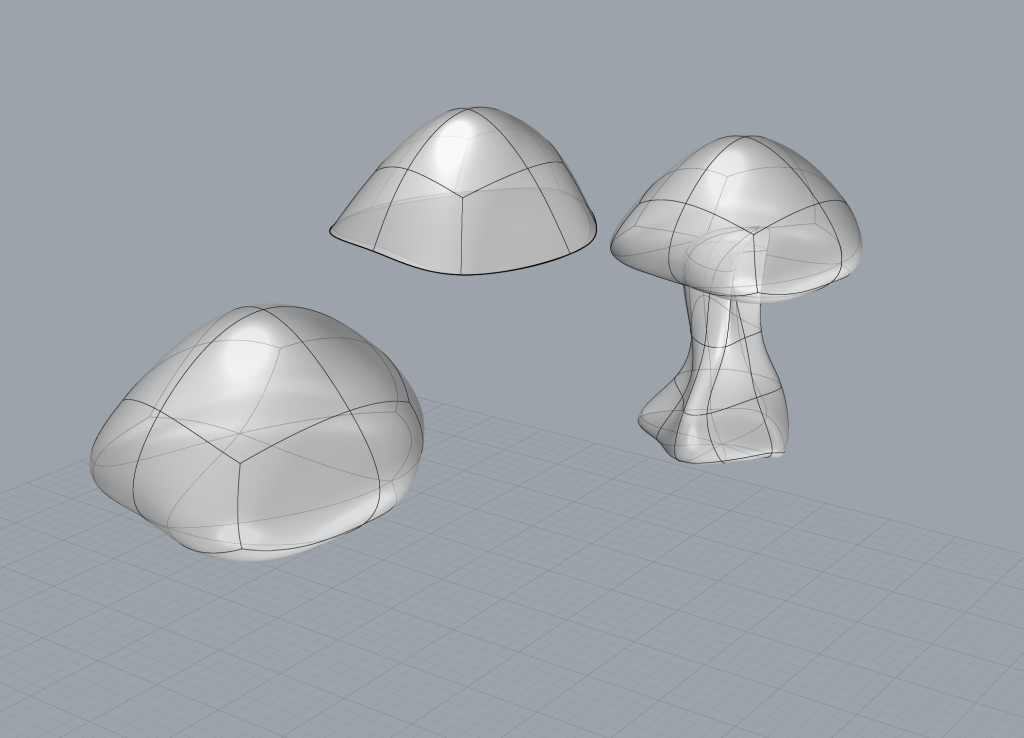
Title of Event: Samek exhibition – Glitter and Trash
Date & Time of Event: Friday, October 5th 2024
Location of Event: Samek Art Gallery
Type of event: Current exhibition
